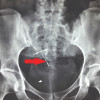
 IJCP Editorial Team
IJCP Editorial Team
Energy-based devices in gynecology: the new frontier for the treatment of genitourinary syndrome of postmenopause
Genitourinary syndrome (GUS) is a common disease after menopause and occurs due to a sharp decline in estrogen levels. the North American Menopause Society describes the syndrome according to a set of signs observed during a physical examination and associated symptoms due to estrogen deficiency, involving the labia majora, labia minora, vestibule, clitoris, urethra, and bladder.
Classical therapy involves long-term use of topical estrogen. However, treatment adherence is reduced over time, resulting in frequent relapses. New alternatives have also been pursued in patients with contraindications to hormone therapy. Investigations are ongoing using physical energies, such as laser, radiofrequency, and ultrasonography aspired at reducing the consequences of hypoestrogenism in the lower genital tract (LGT).
FDA licenses the CO2 laser systems for “incision, excision, ablation, vaporization, and coagulation of soft tissues in the body,” thus is used in specialties like dermatology, otorhinolaryngology, neurosurgery, urology, and gynecology, including genitourinary surgery since 2010.
Energy-based devices (EBDs), like radiofrequency and laser, are authorized by the FDA for general indications of gynecological instrument use, including the destruction of abnormal cervical or vaginal tissue, condylomata, and precancerous lesions, which have always been followed in gynecology.
The FDA, in 2018, issued a warning regarding the indiscriminate use of lasers and other EBDs for cosmetic purposes, which could cause serious adverse events, like vaginal burns, scarring, painful sexual intercourse, and recurrent/chronic pain.
The North American Menopause Society, in 2020, also issued a norm regarding the use of EBDs. Although yet to be approved by the FDA for use in GUS and are still considered an experimental treatment, several clinical studies have demonstrated their effectiveness in treating the syndrome.
The main benefits of EBD use in the LGT are-
- non-keratinized epithelium thickening,
- Increase in local angiogenesis,
- Lubrication improvement,
- Normalization of the genital microbioma,
- Decline in vaginal pH,
- New collagen fibers development and vaginal architecture restoration, elasticity improvement and decrease in the frequency of microtraumas,
- Genitourinary symptoms improvement.
Along with describing the benefits, the North American Menopause Society alerted that training with an EBD should be provided with care and risk associated with the inadequate use of the device.
A recent meta-analysis showed improvements in both genitourinary symptoms and their repercussions on urinary incontinence, quality of life, the vaginal health index, and sexuality. Also, a low rate of non-severe side effects was reported.
It is recommended that the indication of the procedure should be clearly explained to the patients who should be instructed on the limitations of the method.
Further, it must be remembered that the techniques involving EBDs are still in the experimental stage; thus, further studies evaluating the long-term benefits and risks for patients with GUS are warranted.
SOURCE- Soares-Júnior JM, Barbosa MTA, Aguiar LM, et al. Energy-based devices in gynecology: the new frontier for the treatment of genitourinary syndrome of postmenopause?. Clinics (Sao Paulo). 2021;76:e3066. Published 2021 Jun 28. doi:10.6061/clinics/2021/e3066

IJCP Editorial Team
Comprising seasoned professionals and experts from the medical field, the IJCP editorial team is dedicated to delivering timely and accurate content and thriving to provide attention-grabbing information for the readers. What sets them apart are their diverse expertise, spanning academia, research, and clinical practice, and their dedication to upholding the highest standards of quality and integrity. With a wealth of experience and a commitment to excellence, the IJCP editorial team strives to provide valuable perspectives, the latest trends, and in-depth analyses across various medical domains, all in a way that keeps you interested and engaged.












Please login to comment on this article